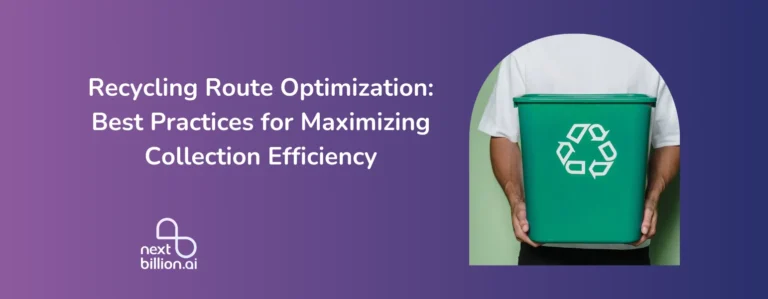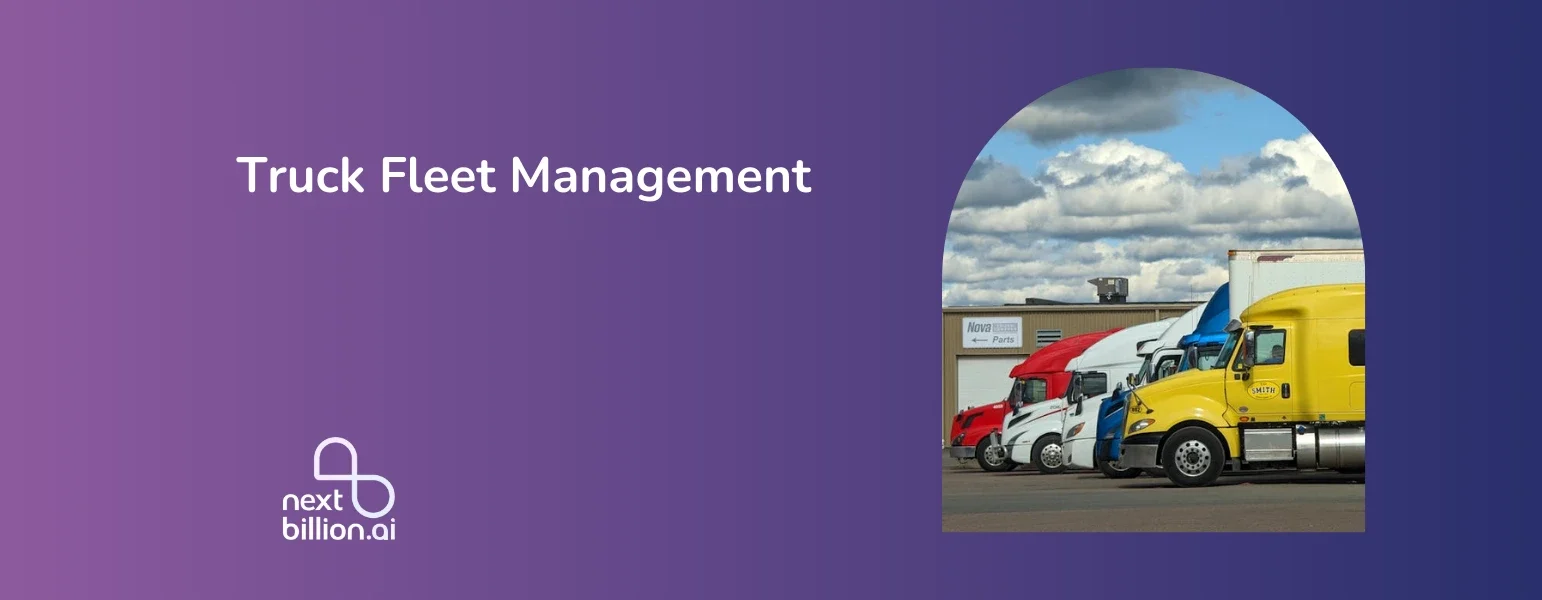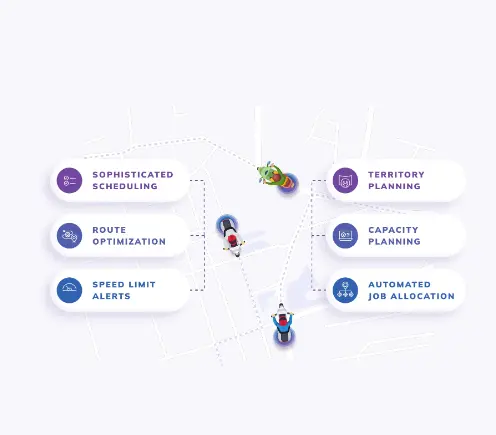
Table of Contents
The Markets & Markets report estimates the rise of global truck fleet management from $25.5 billion in 2022 to $52.4 billion by 2027. This huge number exemplifies how this significant industry will reach substantial heights in the coming years. This remarkable growth results in the large adoption of fleet management solutions in different industries worldwide.
A fleet management system helps manage a fleet of vehicles, contributing to optimizing operations and boosting cost efficiency by managing the drivers, fuel, and compliance. You can take an example of the logistics industry that utilizes it to streamline processes. However, how do they achieve this to gain efficiency? Well, this is not just because of the fleet they own; it’s the complete set of tools that improvise these operations.
For instance, operating a company with a limited number of trucks can be initially manageable, but when the fleet expands, it may become challenging to manage everything and maintain a budget. By implementing an effective fleet engagement system, a business can maintain consistency and reliability and reduce costs in their operations. In this article, we’ll examine what is truck fleet management, its related components, the technology behind it, and more. Let’s kick off!
Overview of Truck Fleet Management
Truck fleet management is a broad term that accompanies many actions and processes that are required to manage a fleet of five or more trucks to ensure that every truck runs on time, within budget, and at optimum efficiency. That’s why every business with logistics as their prime operations should have a fleet management system that helps the fleet manager monitor the vehicles, drivers, equipment, and route optimization through a single interface.
The technology is powered by telematics devices that capture information about the vehicle movement, driver behavior, and operational activities. The devices transmit the data from the vehicle to the cloud through cellular or satellite communication networks. The data is then interpreted and visualized in fleet management software.
The software provides information about vehicle location, utilization, compliance, maintenance, driver behavior, job status, and route optimization through a centralized and easy-to-understand dashboard.
The Growing Need for Efficient Fleet Management
Before we get through the need for efficient fleet management, you must look at the current marketing trends and future needs. According to Global Market Insights, the fleet management market was valued at $21.4 billion in 2023 and is expected to grow at a CAGR of more than 16% between 2024-2032. The primary reasons for this surge are high efficiency and cost reduction. Effective fleet management systems can perform from monitoring vehicles to mileage and engine performance.
Moreover, fleet management solutions are transforming because of integration with advanced technologies like telematics, artificial intelligence (AI), and the Internet of Things (IoT). For instance, GPS tracking, telematics, route planning, and optimization software are some of the latest technologies, providing real-time insights into vehicles’ position, fuel consumption, and traffic. These insights identify several ways to limit fuel consumption by improving routes, reducing idling, and ensuring faster delivery times.
Core Components of Truck Fleet Management System
With the rising economy, it is becoming difficult to maximize profits due to increased expenses. Hence, a fleet management system provides 360-degree visibility into the operations, so fleet managers can get insights on the parts of process can be optimized to reduce the overall expenses.
Here are the core components that a truck fleet management system manages seamlessly:
1. Route Planning and Optimization
Effective route planning is essential for optimizing fleet operations and long-term success. Fleet management system support route optimization feature which plans out the most efficient routes that result in minimizing mileage, travel time, and fuel consumption.
The system considers several parameters, like traffic, weather, and vehicle capabilities, in real time to create an optimal route. Besides, fleet managers can plan a route with multiple delivery stops along with stops for prerequisite tasks, like refueling, to plan efficiently. The best part is that fleet management software comes with third-party integration, so if you require a powerful route optimization API that can generate dispatch-ready routes within seconds with the ability to modify the existing routes without changing the itinerary completely.
2. Vehicle Maintenance and Safety
Regular maintenance of vehicles is crucial to keep them in optimal condition. It only requires simple oil changes and tyre rotations or, in complex cases, changes in damaged parts of the truck. Routine servicing and inspection of vehicles can extend their lifespan and minimize unexpected breakdowns and additional costs.
Moreover, fleet managers should keep an accurate record of maintenance history—which is crucial for proof of compliance. However, keeping track of maintenance history manually can be daunting and instill a high risk of human error. In that case, fleet managers can use a fleet management system to keep records of maintenance, saving time and minimizing the risk of error.
3. Driver Management
The next component is driver management, which focuses on ensuring drivers’ safety and competence. A fleet management system can be integrated with your existing telematics systems. Since telematics systems gather information related to speed, driver behavior, fuel consumption, idle time and vehicle utilization, and cargo-specific data, the fleet management system can draw insights from collected data to dynamically optimize the routes.
The integration can help in reducing fuel costs because telematics system provides information related to fuel consumption and idle time. The fleet management system will consider all aspects to create an efficient route in accordance with real-time conditions.
4. Fuel Management
Fuel expenses can become one of the most concerning issues if you are not practicing effective fuel management strategies. Truck fleet management systems can calculate and analyze exact fuel usage by leveraging fuel tracking features.
With these usage insights, the software can assist in making an effective fuel management strategy to find areas of improvement to reduce fuel consumption and contribute to a more sustainable future. Remember, controlling fuel costs isn’t a minute task; it’s an ongoing process because the price of diesel/gas can rise unexpectedly.
Benefits of Implementing a Truck Fleet Management System
A truck fleet management system is required today to optimize costs and make logistic operations easier. Let’s see how it happens:
1. A truck fleet management system monitors real-time vehicle data, which helps optimize routes. With this data, multiple stops can be added on the same route, covering more deliveries and reducing the need to make additional trips.
2. Real-time monitoring provides insights that can help in taking quick action in case of accidents or traffic disruptions. Monitoring the driver’s behavior can influence the training programs and introduce new rules and regulations to standardize operations.
3. Another key advantage of the truck fleet management system is that it helps track and extend the life of vehicles. The tracking hardware is installed within each vehicle and transmits telematics data to the fleet management system. You can get a complete view of the vehicles’ performance and schedule maintenance and repair services accordingly. When vehicles are kept in up-to-date condition, there are chances of breaking down are reduced.
4. A truck fleet management system makes complying with all the regulations simpler because you will get all the data related to maintenance, repair, inspections, driving hours, and everything in a digitized way.
How Does NextBillion.ai’s Fleet Management Software Make Operations Simplified?
A fleet management system has different features, which makes it an all-around solution. For instance, NextBillion’s Fleet Management System comprises several APIs and SDKs, like Route Optimization (API), Distance Matrix (API), Navigation (API & SDK), Live Tracking (API), Snap-to-Road (API), and Geofencing (API).
Let’s understand these APIs & SDKs and their functions in detail:
Route Optimization (API)
The route optimization feature helps create dispatch-ready routes within seconds. These routes are designed after considering over 50 parameters, and no modifications are required because the route is optimized in all aspects. You can include additional stops to existing routes without much modification, and the routes can be created logically after giving time for completing prerequisite tasks, like refuelling or anything.
Distance Matrix (API)
The distance matrix API provides accurate and reliable ETAs, distances, and directions for trucks with seamless scalability. It can process high-order volumes with 5000×5000 matrix sizes. You can add thousands of origin and destination points within a single API request to get estimates. It features pre-processed maps, which allow distance calculations within seconds.
Navigation (API & SDK)
Our fleet management system provides specialized and compliant routes for trucks to ensure the safety of the drivers, vehicles, and goods. It considers several factors, such as truck dimensions, cargo type, hazardous materials, and others, to create an optimized route.
Live Tracking (API)
With the Live Tracking API, you can efficiently track your assets within 1 meter. It comes with alerts and notification features, so you can be notified whenever a vehicle crosses the speed limit, indulges in excessive idling, or finds assets passing through specified custom boundaries.
Snap-to-Road (API)
This feature helps reconstruct routes to make operations more efficient. It can trace the routes taken and retrieve a complete set of information related to speed limits, vehicle speed, overlapping routes, and much more. Then, you can utilize the information to solve for multi-routes with 200 coordinates per request.
Geofencing (API)
With this feature, you can draw or import geofences to mark virtual boundaries, which will help the truck drivers visualize the area in a better way, especially if they are new in that region. You can specify the restricted area so the routes are diverted around them instead of through them. It also offers a real-time modification feature with zero latency.
Does a Fleet Management Software Introduce Sustainability in Fleet Management?
Extreme climatic conditions have sparked greater climate awareness and resulted in new clean air standards around the world. The tightening of these environmental legislations implies fleet managers need to comply with several mandates and pressure to eliminate internal combustion engines. Therefore, fleet managers and other workers should be aware of these updated guidelines, which will help them formulate their own strategies.
- Timely maintenance ensures the optimal functioning of vehicles
- Optimized routes mean a lesser waste of resources on unnecessary trips
- Quick identification of vehicles that are not fit for the road.
- Adjust fuel requirements after analyzing the insights into fuel utilization
- Monitor driver’s behavior and train them to utilize the resources appropriately
The adoption of the latest technologies, such as AI, telematics, and IoT, has made truck fleet management easier for companies. Effective fleet management systems optimize the operations of managing vehicle maintenance, compliance, fuel consumption, and drivers. Implementing the correct practices also helps save costs, efficiency, and safety. Further, Data Analytics and real-time tracking help managers make the right decisions, provide route optimizations, and manage fuel.
Therefore, fleet managers can leverage the power of technology to create for streamlining fleet operations.
About Author
Bhavisha Bhatia
Bhavisha Bhatia is a Computer Science graduate with a passion for writing technical blogs that make complex technical concepts engaging and easy to understand. She is intrigued by the technological developments shaping the course of the world and the beautiful nature around us.











